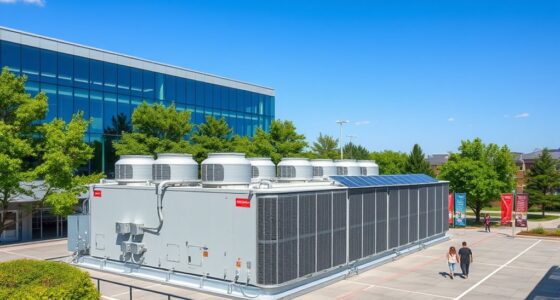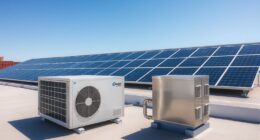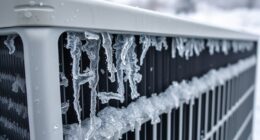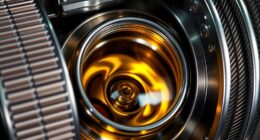Hey! Are you prepared to challenge your understanding?
We’ve got a residential heat pump efficiency quiz that will challenge your understanding of this important topic.
From factors affecting efficiency to innovative technologies and government incentives, we cover it all.
So, grab a pen and get ready to learn.
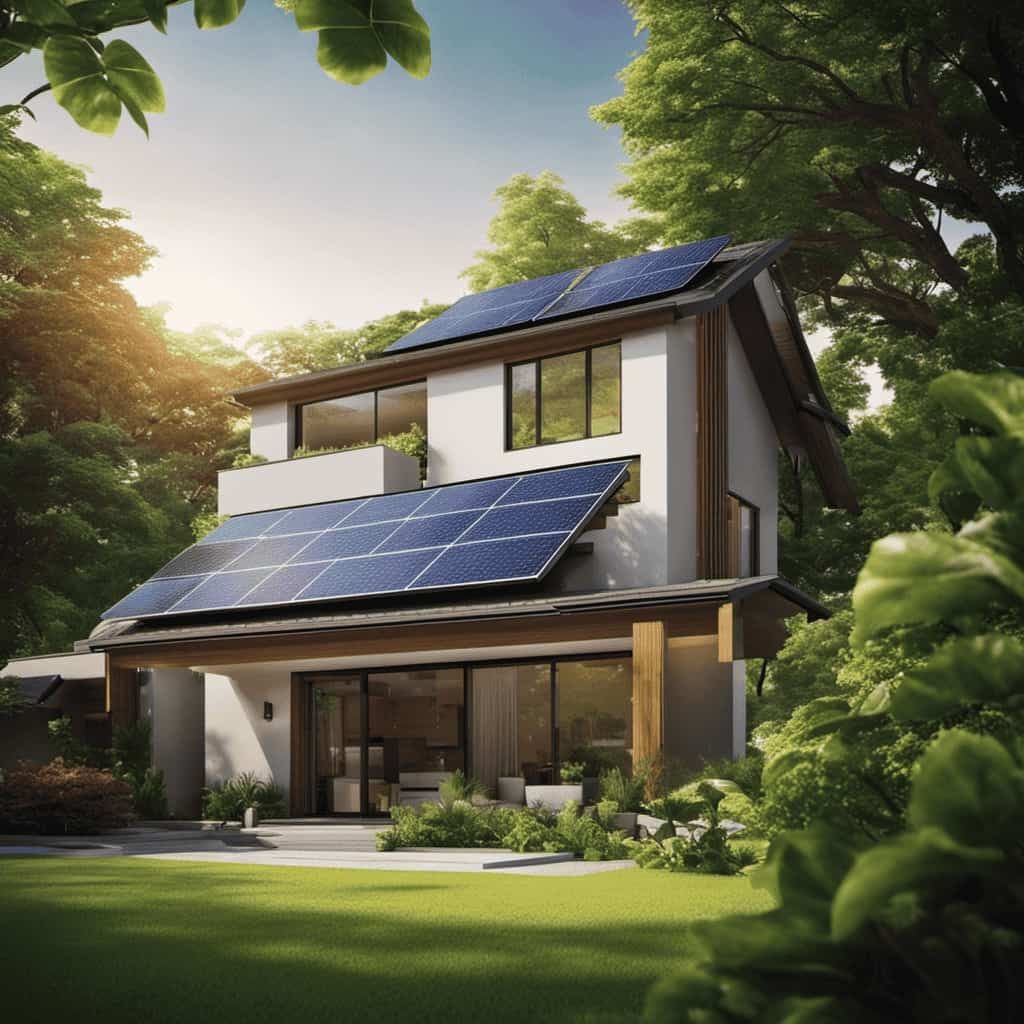
By the end of this quiz, you’ll be a heat pump efficiency expert!
Let’s get started.
Key Takeaways
- Efficiency ratings such as SEER and HSPF measure how well a heat pump converts energy into heat or cool air.
- Properly sized heat pumps, leak-free ducts, and location optimization are important factors for maximizing heat pump efficiency.
- SEER is used to evaluate cooling efficiency, while HSPF is used to assess heating efficiency.
- Regular maintenance, proper insulation, and temperature adjustments can help save energy and increase heat pump efficiency.
Understanding Heat Pump Efficiency Ratings
Let’s delve into the topic of understanding heat pump efficiency ratings. When it comes to heat pump efficiency troubleshooting, understanding efficiency ratings is crucial. Efficiency ratings are a way to measure how well a heat pump converts energy into heat or cool air. The higher the rating, the more efficient the heat pump is.
The most common rating system is the Seasonal Energy Efficiency Ratio (SEER) for cooling and the Heating Seasonal Performance Factor (HSPF) for heating. SEER measures the cooling efficiency, while HSPF measures the heating efficiency.
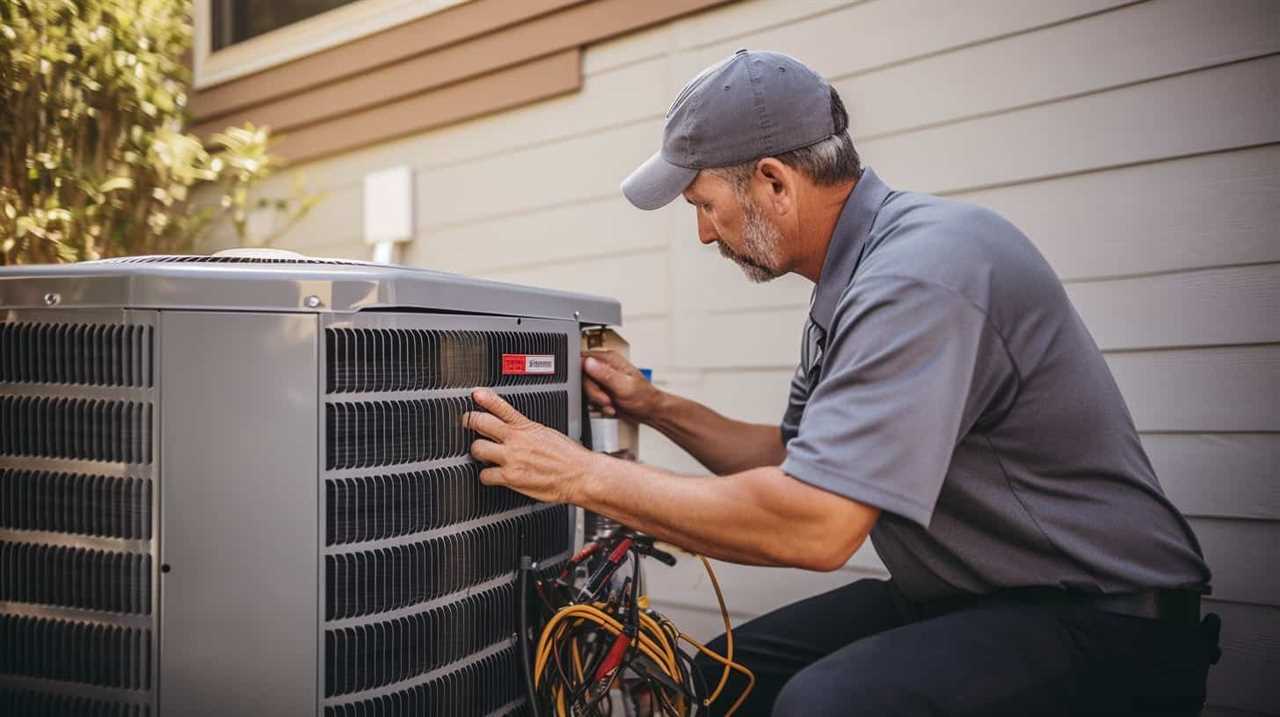
It’s important to note that higher efficiency ratings often come with a higher price tag, but they can result in lower energy bills in the long run.
Now, let’s move on to discussing the factors affecting residential heat pump efficiency.
Factors Affecting Residential Heat Pump Efficiency
We frequently encounter various factors that can affect the efficiency of residential heat pumps. Understanding these factors is crucial in optimizing heat pump efficiency and performance.
One significant factor is the size of the heat pump. A properly sized heat pump will ensure efficient operation and prevent unnecessary energy consumption.
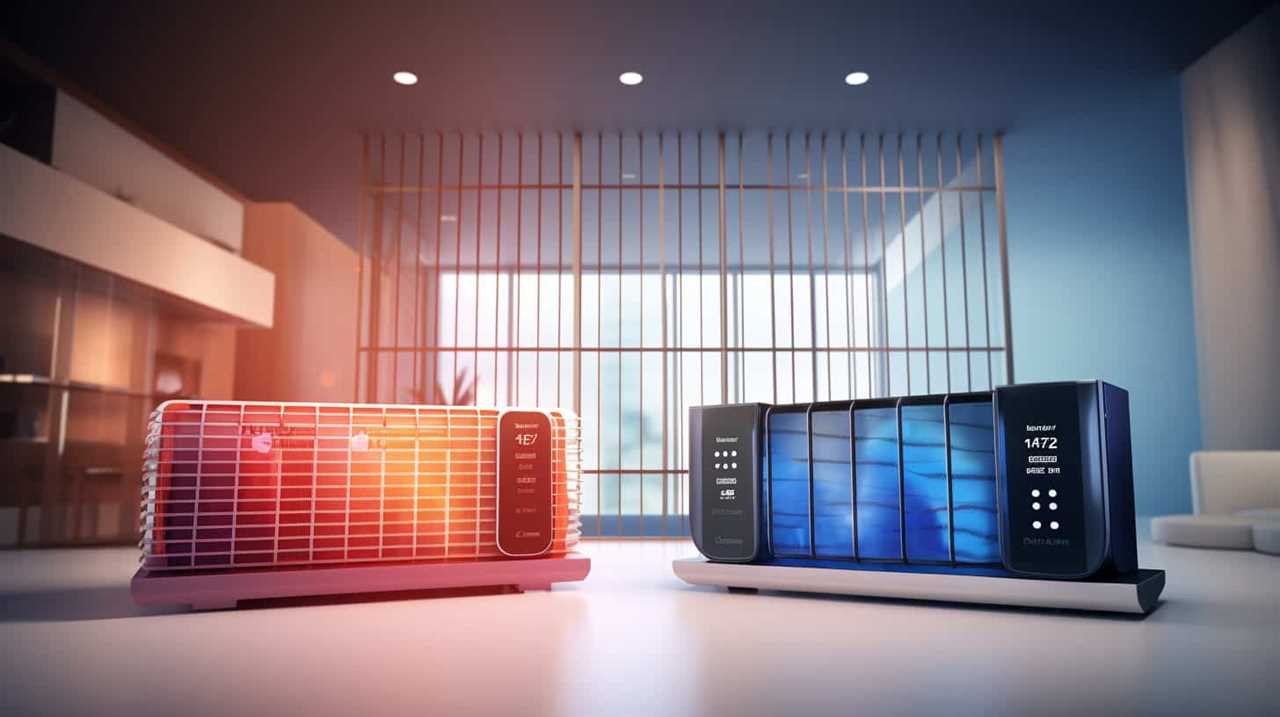
Another factor is the condition of the ductwork. Leaky or poorly insulated ducts can lead to heat loss or inadequate airflow, reducing the overall efficiency of the system.
Additionally, the location of the heat pump can impact its performance. Heat pumps should be placed in a well-ventilated area with sufficient space for proper airflow.
Regular maintenance and cleaning of the heat pump, including the coils and filters, is also essential for optimal efficiency.
SEER Vs. HSPF: Comparing Efficiency Metrics
When comparing the efficiency metrics of SEER and HSPF, we can determine which one is more suitable for residential heat pump systems. SEER, or Seasonal Energy Efficiency Ratio, measures the cooling efficiency of a heat pump by comparing the amount of cooling provided to the amount of energy consumed. On the other hand, HSPF, or Heating Seasonal Performance Factor, measures the heating efficiency by comparing the amount of heat provided to the amount of energy consumed. To better understand the efficiency comparison between SEER and HSPF, let’s take a look at the table below:
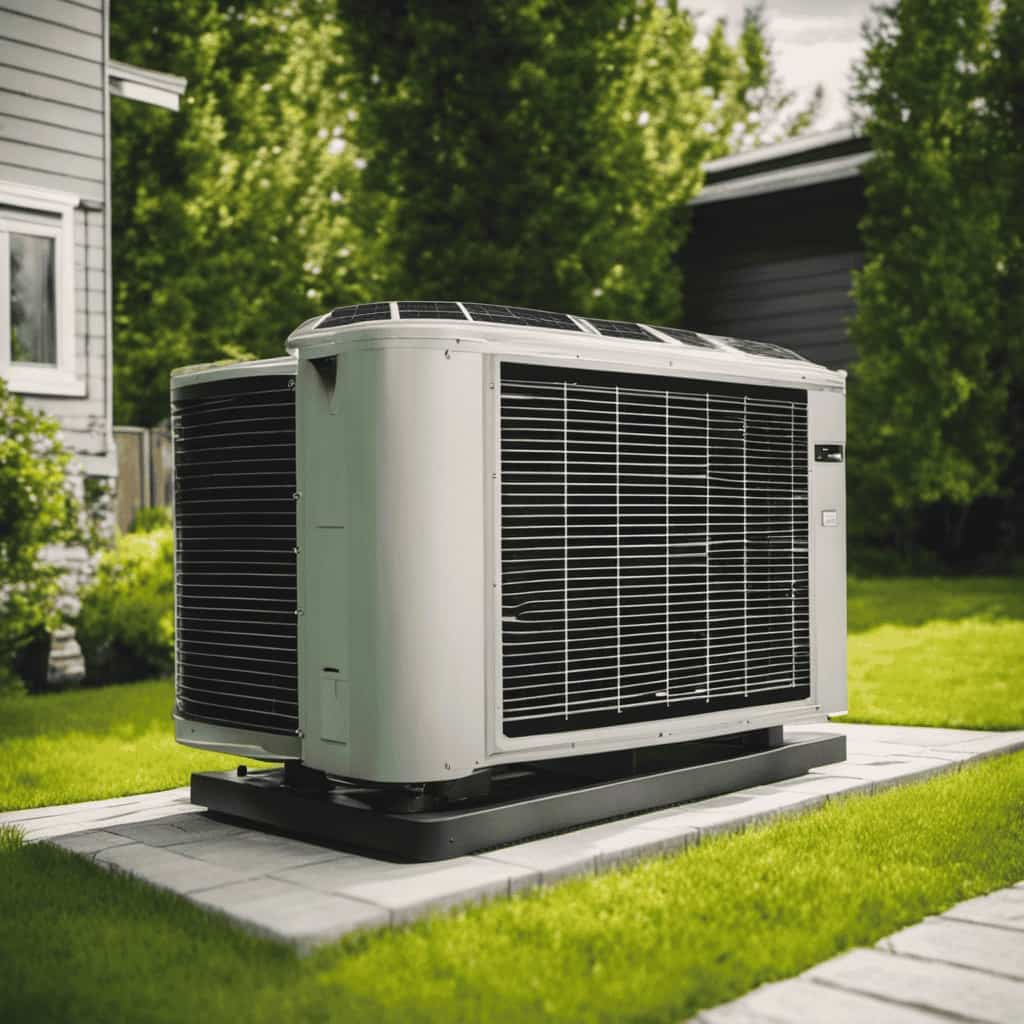
| Metric | SEER | HSPF |
|---|---|---|
| Cooling Efficiency | ✓ | |
| Heating Efficiency | ✓ |
As we can see, SEER focuses on cooling efficiency, while HSPF focuses on heating efficiency. This makes SEER more suitable for evaluating the cooling performance of a residential heat pump, while HSPF is better for assessing its heating performance. Now that we have compared these efficiency metrics, let’s move on to the next section, where we will learn how to calculate heat pump efficiency.
How to Calculate Heat Pump Efficiency
When it comes to calculating heat pump efficiency, there are three main points to consider.
First, understanding the different measurement methods is crucial.
Second, there are several factors that can affect a heat pump’s efficiency, such as temperature and humidity.
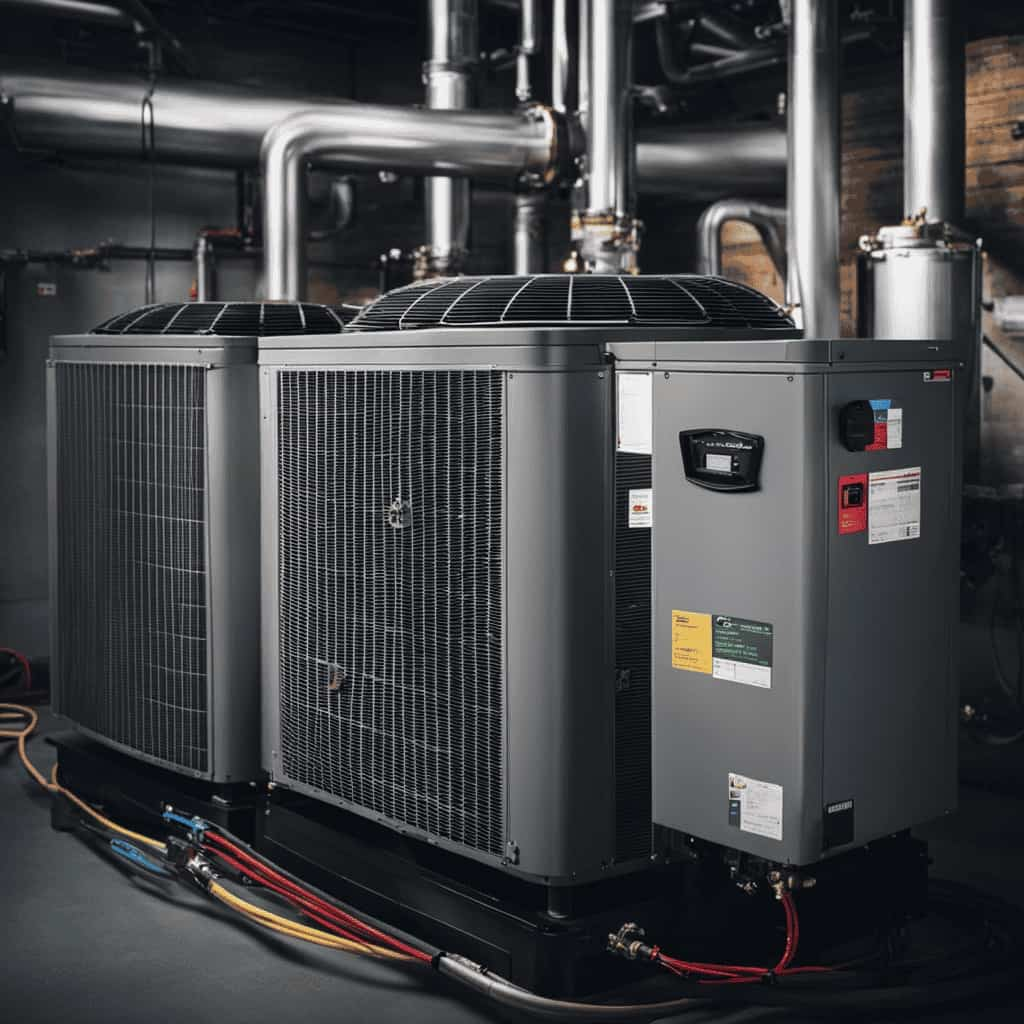
Lastly, interpreting efficiency ratings can help homeowners make informed decisions when choosing a heat pump for their residential needs.
Efficiency Measurement Methods
To calculate heat pump efficiency, we use a specific formula that takes into account the amount of heat produced and the amount of electricity consumed. Efficiency measurement techniques are crucial in determining the performance of a heat pump and its ability to convert electrical energy into heat effectively.
Here are three important methods for measuring efficiency:
-
Coefficient of Performance (COP): This ratio compares the amount of heat produced to the amount of electrical energy consumed, providing a measure of how efficiently the heat pump is operating.
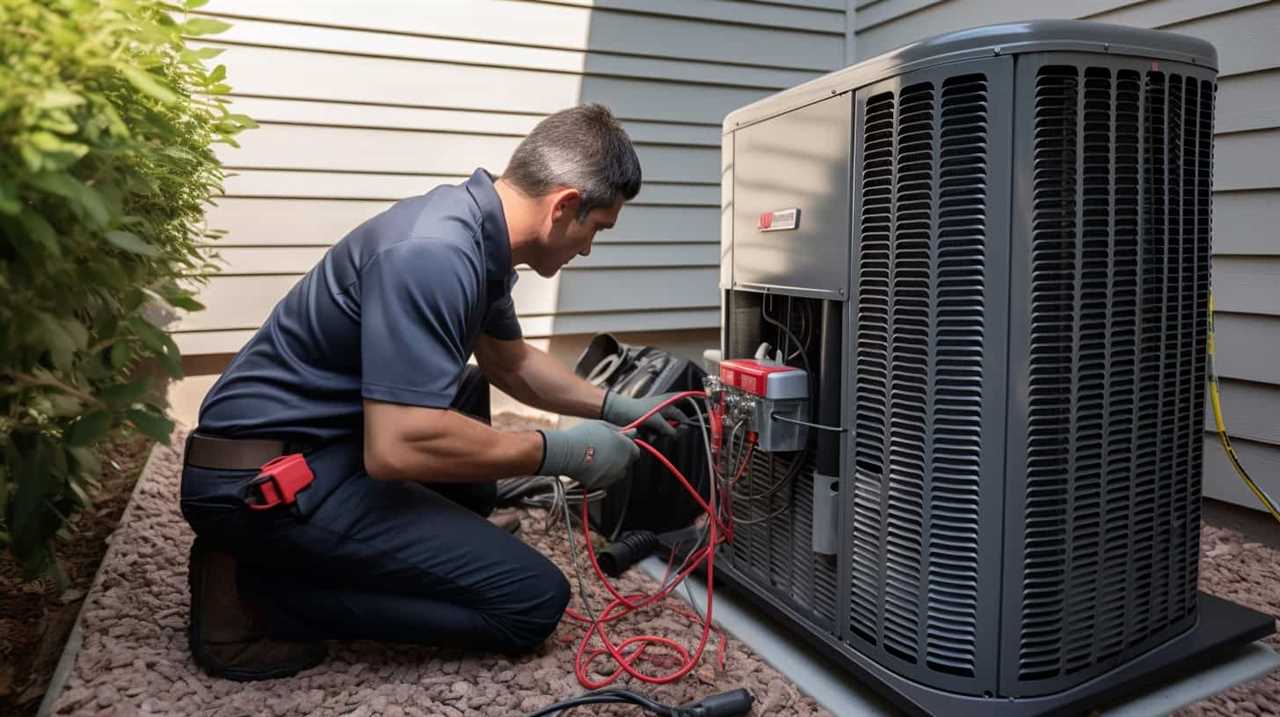
-
Seasonal Energy Efficiency Ratio (SEER): SEER measures the cooling efficiency of a heat pump over an entire cooling season, taking into account the heat pump’s energy consumption and cooling output.
-
Heating Seasonal Performance Factor (HSPF): HSPF is a measure of the heating efficiency of a heat pump over an entire heating season, considering the heat pump’s energy consumption and heating output.
Understanding these efficiency measurement techniques is vital for homeowners seeking to maximize energy efficiency and reduce their environmental impact.
Factors Affecting Efficiency
In order to calculate heat pump efficiency, we need to consider several factors that can affect its performance. These factors include energy saving techniques and the impact of climate on efficiency. By understanding and optimizing these factors, we can ensure that our heat pump operates at its highest efficiency, saving both energy and money.

| Factors Affecting Efficiency | Description | Impact |
|---|---|---|
| Insulation | Proper insulation reduces heat loss, improving efficiency. | High insulation leads to higher efficiency. |
| Size and capacity | Choosing the right size and capacity ensures optimal performance. | Oversized or undersized units can decrease efficiency. |
| Maintenance | Regular maintenance keeps the system in top condition. | Neglected maintenance can reduce efficiency. |
| Climate | Climate affects the heat pump’s ability to heat or cool efficiently. | Extreme temperatures can lower efficiency. |
Understanding these factors and their impact on efficiency is essential for maximizing the performance of your heat pump and achieving optimal energy savings.
Interpreting Efficiency Ratings
We can calculate heat pump efficiency by considering the various factors that impact its performance. To interpret efficiency ratings, we need to understand the following:
-
Coefficient of Performance (COP): This measures the ratio of heat output to electrical energy input. A higher COP indicates greater efficiency.
-
HSPF (Heating Seasonal Performance Factor): This measures the efficiency of a heat pump’s heating performance over an entire season.

-
SEER (Seasonal Energy Efficiency Ratio): This measures the cooling efficiency of a heat pump over a full cooling season.
Efficiency measurement techniques such as these help us determine the effectiveness of a heat pump and identify opportunities for improving its performance.
By understanding and comparing these ratings, we can make informed decisions about which heat pump is best suited for our needs.
Moving forward, let’s explore the importance of proper sizing for efficiency.

The Importance of Proper Sizing for Efficiency
For optimal efficiency, we must ensure proper sizing of residential heat pumps. Installing a heat pump that is either too large or too small for the space it needs to heat or cool can lead to decreased energy efficiency and increased operating costs. Proper sizing involves considering factors such as the size of the home, insulation levels, and climate conditions. To help you understand the importance of proper sizing, here is a table outlining the recommended heat pump capacity based on square footage:
| Square Footage | Recommended Heat Pump Capacity |
|---|---|
| Up to 1,000 | 1.5 – 2.5 tons |
| 1,000 – 1,500 | 2.5 – 3.5 tons |
| 1,500 – 2,000 | 3.5 – 5 tons |
| 2,000+ | 5 – 6 tons |
Energy-Saving Tips for Maximizing Heat Pump Efficiency
Let’s talk about some energy-saving tips that can help maximize the efficiency of your heat pump.
One important tip is to adjust your thermostat settings for optimal efficiency, such as setting it lower during the winter and higher during the summer.
Regular maintenance and cleaning of your heat pump is also crucial to ensure it operates at its best.
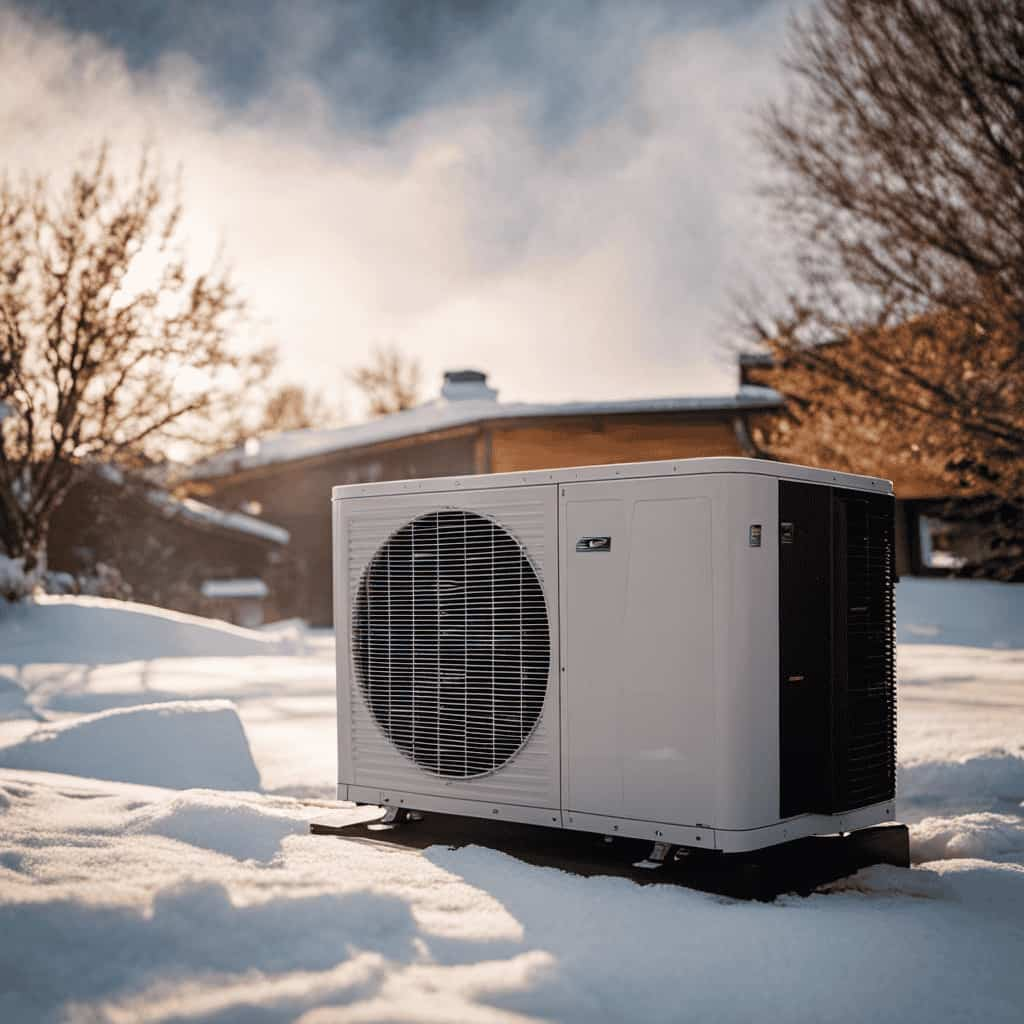
Additionally, proper insulation and weatherization of your home can prevent heat loss and improve the overall efficiency of your heat pump system.
Thermostat Settings for Efficiency
To maximize heat pump efficiency, we should adjust our thermostat settings for optimal energy savings. By programming our thermostat and setting an energy-efficient temperature, we can reduce energy consumption and save money on our heating bills. Here are three tips for setting our thermostat for efficiency:
- Set the temperature lower during nighttime hours or when we’re away from home to reduce energy usage.
- Use a programmable thermostat to automatically adjust the temperature based on our schedule, ensuring comfort when we’re home and energy savings when we’re not.
- Consider setting the temperature slightly lower than our desired comfort level to save even more energy.
Regular Maintenance and Cleaning
Regularly maintaining and cleaning our heat pump is essential for maximizing its efficiency and ensuring optimal energy savings. Here are some regular maintenance tips to keep in mind.
-
First, make sure to clean or replace air filters every one to three months to ensure proper airflow.
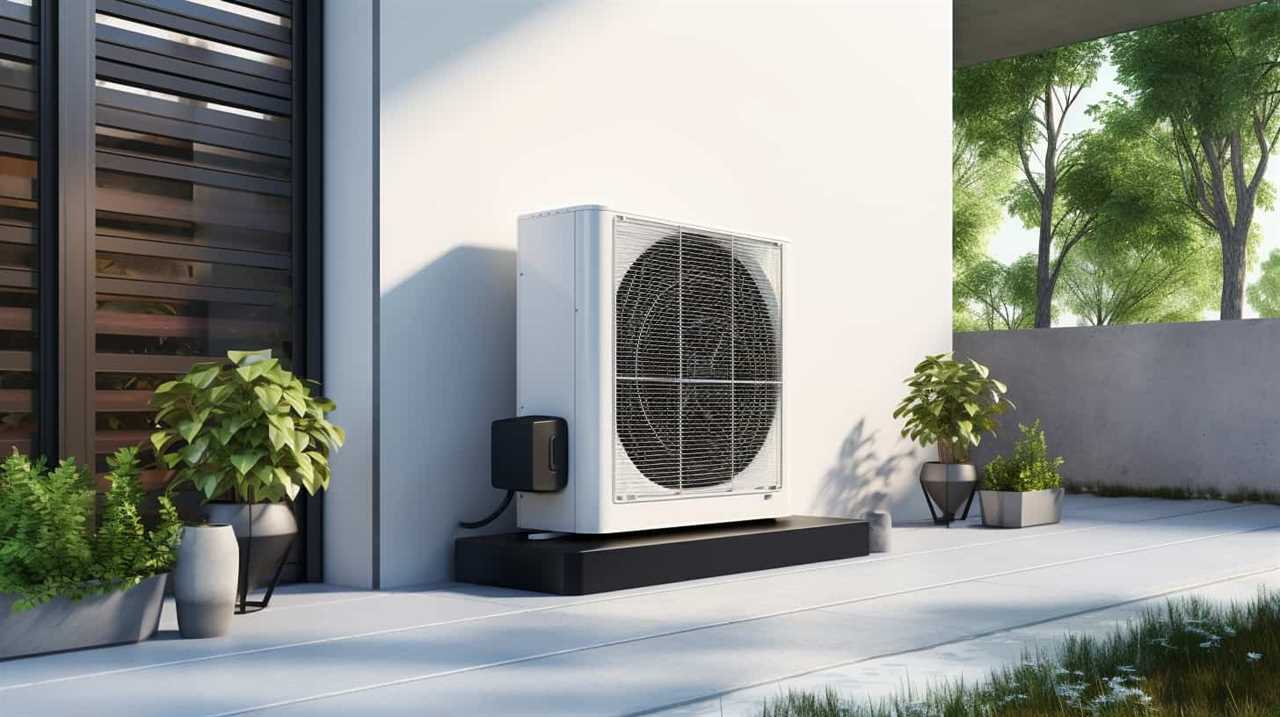
-
Next, check the outdoor unit regularly for debris such as leaves or dirt and clean it as needed.
-
It’s also important to inspect the ductwork for any leaks and seal them promptly.
-
Troubleshooting common issues such as strange noises or uneven heating can often be resolved by scheduling a professional maintenance service.
By following these regular maintenance tips and addressing any issues promptly, we can ensure that our heat pump operates at its best efficiency, saving energy and money.
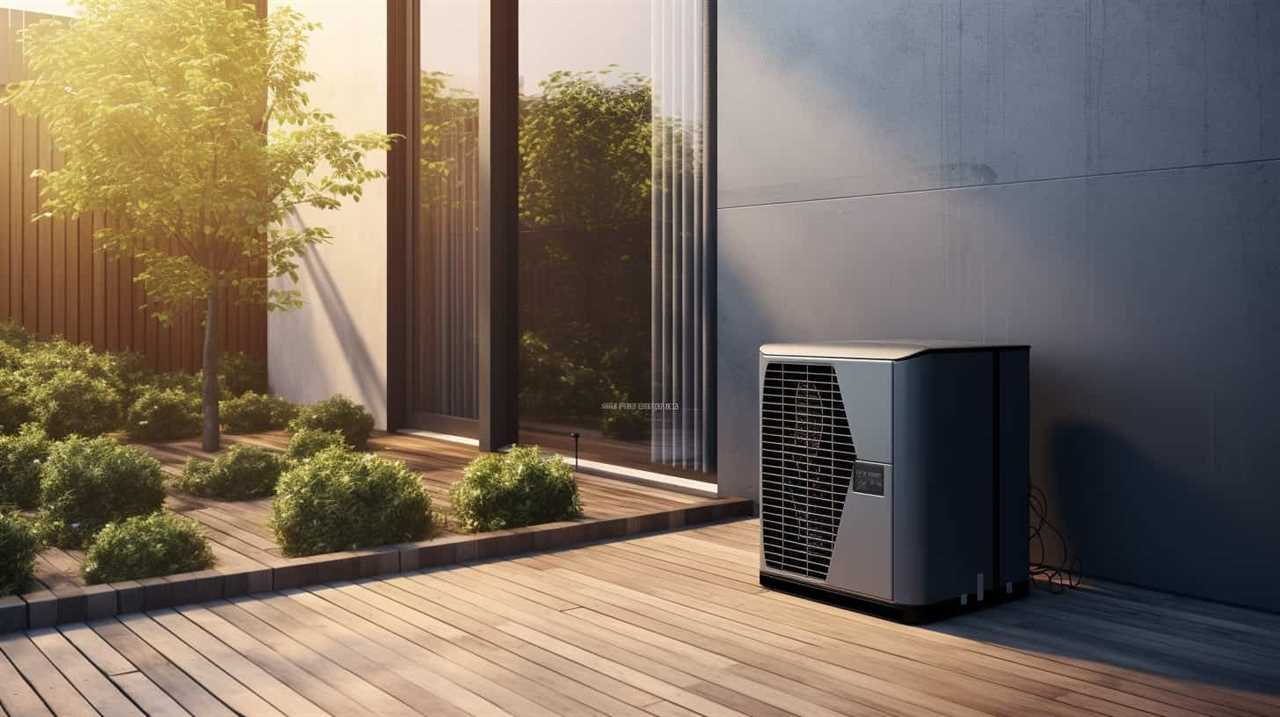
Now, let’s move on to the next section about insulation and weatherization.
Insulation and Weatherization
To maximize our heat pump efficiency and save energy, we need to prioritize insulation and weatherization. By implementing energy-efficient insulation and weatherproofing techniques, we can create a more comfortable and energy-efficient home environment.
Here are three key tips to consider:
-
Upgrade insulation: Adding insulation to walls, floors, and attics can significantly reduce heat loss and improve energy efficiency. Choose insulation materials with high R-values for maximum effectiveness.
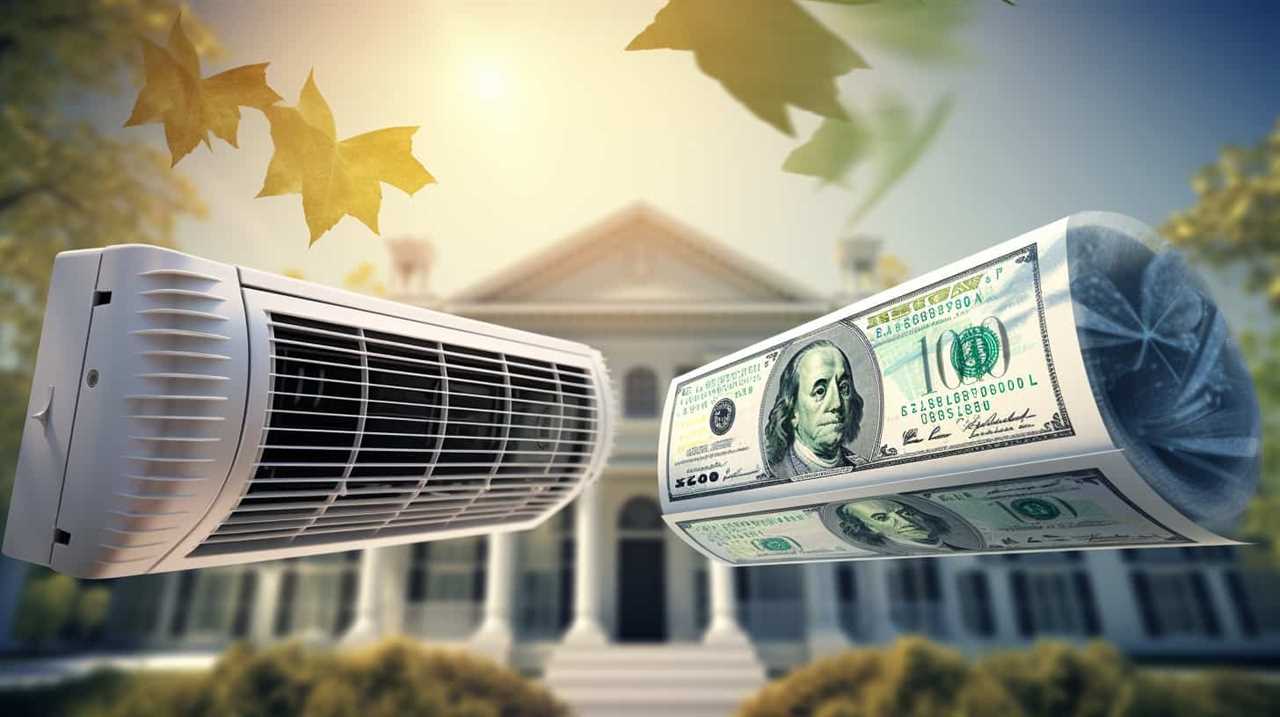
-
Seal air leaks: Identify and seal any gaps or cracks around windows, doors, and other areas where air can escape. Weatherstripping and caulking are effective techniques to prevent drafts and maintain a consistent indoor temperature.
-
Install double-glazed windows: Double-glazed windows provide better insulation and reduce heat transfer. They help to keep the warm air inside during winter and the cool air inside during summer.
Implementing these energy-saving measures won’t only enhance the performance of your heat pump but also reduce your energy bills and carbon footprint.
Common Myths and Misconceptions About Heat Pump Efficiency
We often encounter common myths and misconceptions about heat pump efficiency.

One misconception is that heat pumps aren’t efficient in cold climates. However, this isn’t true. Heat pumps are designed to work efficiently in a wide range of temperatures, including cold climates.
Another misconception is that heat pumps aren’t as efficient as traditional heating and cooling systems. In reality, heat pumps can be much more efficient, as they transfer heat from one place to another instead of generating heat.
Additionally, some people believe that turning up the thermostat will heat or cool the house faster. This is a myth; the heat pump will operate at the same speed regardless of the thermostat setting.
It’s important to debunk these efficiency myths and educate homeowners on the true benefits of heat pumps.
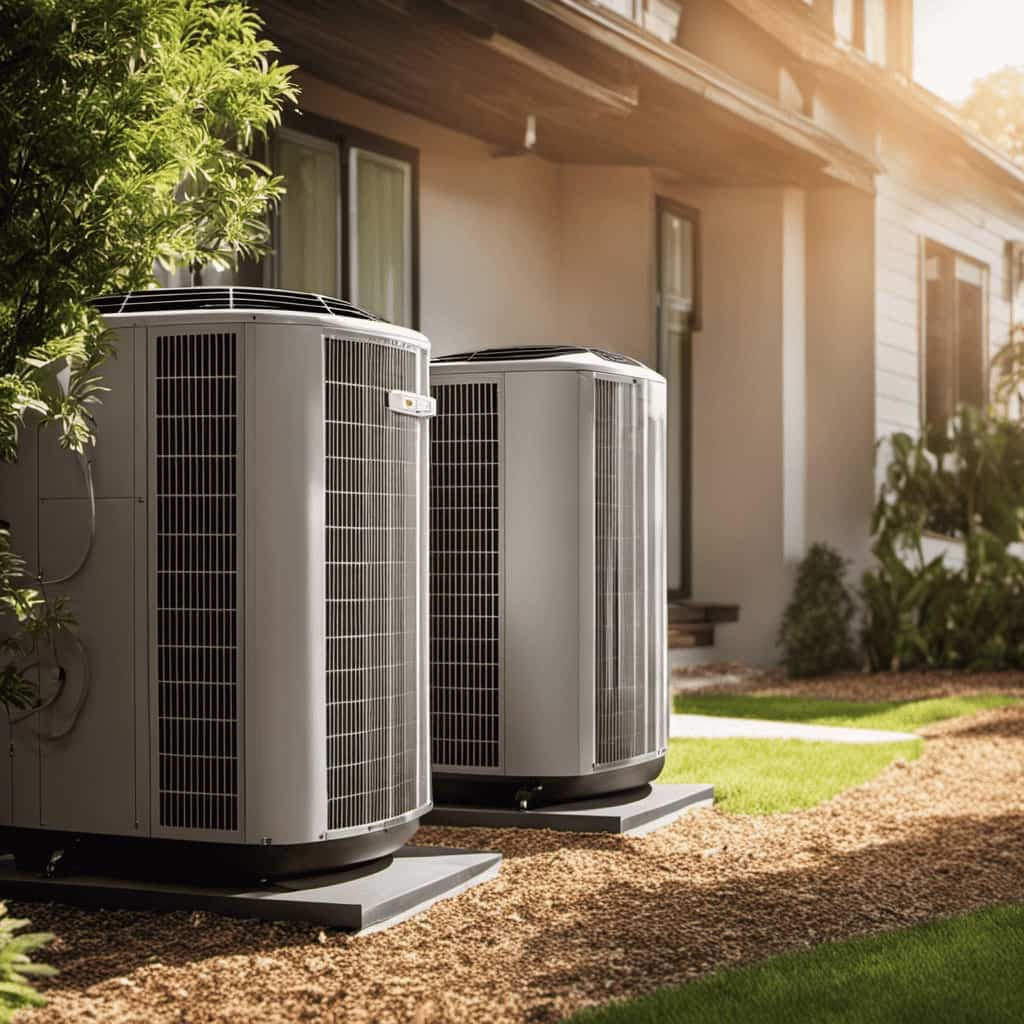
Innovative Technologies for Improving Heat Pump Efficiency
We’ll now explore some of the innovative technologies that can enhance the energy-saving capabilities of heat pumps.
These advancements in heat pump technology are designed to improve efficiency and reduce energy consumption.
Energy-Saving Heat Pump Enhancements
Let’s explore innovative technologies that improve heat pump efficiency and save energy. Here are three energy-saving heat pump enhancements:
-
Energy saving heat pump controls: Advanced controls allow for precise temperature adjustments, optimizing the heat pump’s performance and energy consumption. These controls can include features such as programmable thermostats, occupancy sensors, and adaptive algorithms that learn and adapt to the user’s preferences.

-
Heat pump efficiency case studies: Real-life examples of heat pump installations and their energy savings can provide valuable insights and guidance. Case studies showcase the potential benefits of upgrading to high-efficiency heat pumps and highlight the cost savings and environmental impact.
-
Variable-speed compressors: Variable-speed compressors can adjust the speed at which the heat pump operates, matching the heating or cooling demand more accurately. This capability results in improved efficiency, reduced energy consumption, and enhanced comfort levels.
Now that we’ve explored energy-saving heat pump enhancements, let’s move on to discussing advancements in heat pumps.
Advancements in Heat Pumps
To improve heat pump efficiency, we can explore advancements in heat pump technology and innovative technologies.
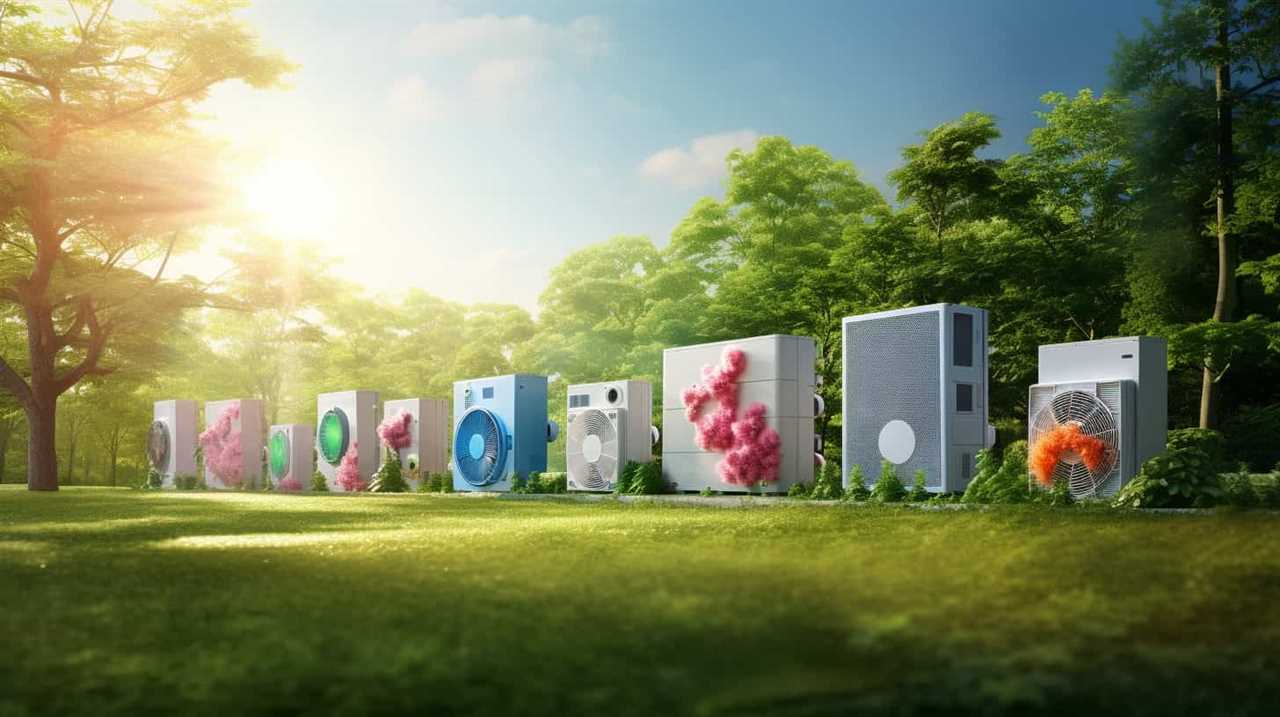
Advancements in heating technology have led to significant improvements in heat pump efficiency, resulting in reduced energy consumption. These advancements include variable speed compressors, which allow the heat pump to adjust its output based on the heating or cooling load, optimizing energy usage.
Additionally, advances in heat exchanger design have improved heat transfer efficiency, enabling the heat pump to extract more heat from the air or ground.
Furthermore, the integration of smart controls and sensors allows for more precise temperature control and better monitoring of system performance.
These advancements in heat pump technology are crucial in reducing energy consumption and promoting sustainability, making them an important consideration for homeowners and businesses alike.

The Role of Regular Maintenance in Maintaining Efficiency
Regular maintenance plays a crucial role in maintaining the efficiency of our residential heat pumps. It’s important to understand the benefits of regular maintenance and the importance of professional servicing. Here are three key reasons why regular maintenance is essential:
-
Improved Efficiency: Regular maintenance ensures that the heat pump operates at its optimal efficiency, reducing energy consumption and lowering utility bills.
-
Extended Lifespan: By regularly maintaining the heat pump, potential issues can be identified and addressed early, preventing costly repairs and extending the lifespan of the system.
-
Enhanced Comfort: Properly maintained heat pumps provide consistent heating and cooling, ensuring a comfortable indoor environment throughout the year.

Professional servicing is also vital as it ensures that the heat pump is inspected and maintained by trained technicians who have the expertise and knowledge to identify and resolve any issues effectively.
Exploring Government Incentives for High-Efficiency Heat Pumps
We can explore the various government incentives available for high-efficiency heat pumps. Energy efficiency programs offered by the government aim to encourage homeowners to invest in more efficient heating and cooling systems. These incentives can help offset the initial cost of purchasing and installing a high-efficiency heat pump, making it more affordable for homeowners. Here is a table outlining some of the common government incentives for high-efficiency heat pumps:
| Government Incentives | Description |
|---|---|
| Tax credits | Homeowners can receive a tax credit for a percentage of the cost of the heat pump, up to a certain limit. |
| Rebates | Some utility companies offer rebates for installing high-efficiency heat pumps, which can help reduce the upfront cost. |
| Financing options | Government-sponsored financing programs provide homeowners with low-interest loans to cover the cost of purchasing and installing a high-efficiency heat pump. |
| Grants | Certain government agencies provide grants to homeowners who switch to high-efficiency heat pumps, helping to further offset the cost. |
These government incentives make it more feasible for homeowners to upgrade to high-efficiency heat pumps, ultimately reducing energy consumption and promoting a greener future.
Assessing the Long-Term Cost Savings of High-Efficiency Heat Pumps
By comparing the upfront cost and potential long-term savings, we can determine the financial benefits of investing in high-efficiency heat pumps. Here are three reasons why high-efficiency heat pumps offer significant cost savings:
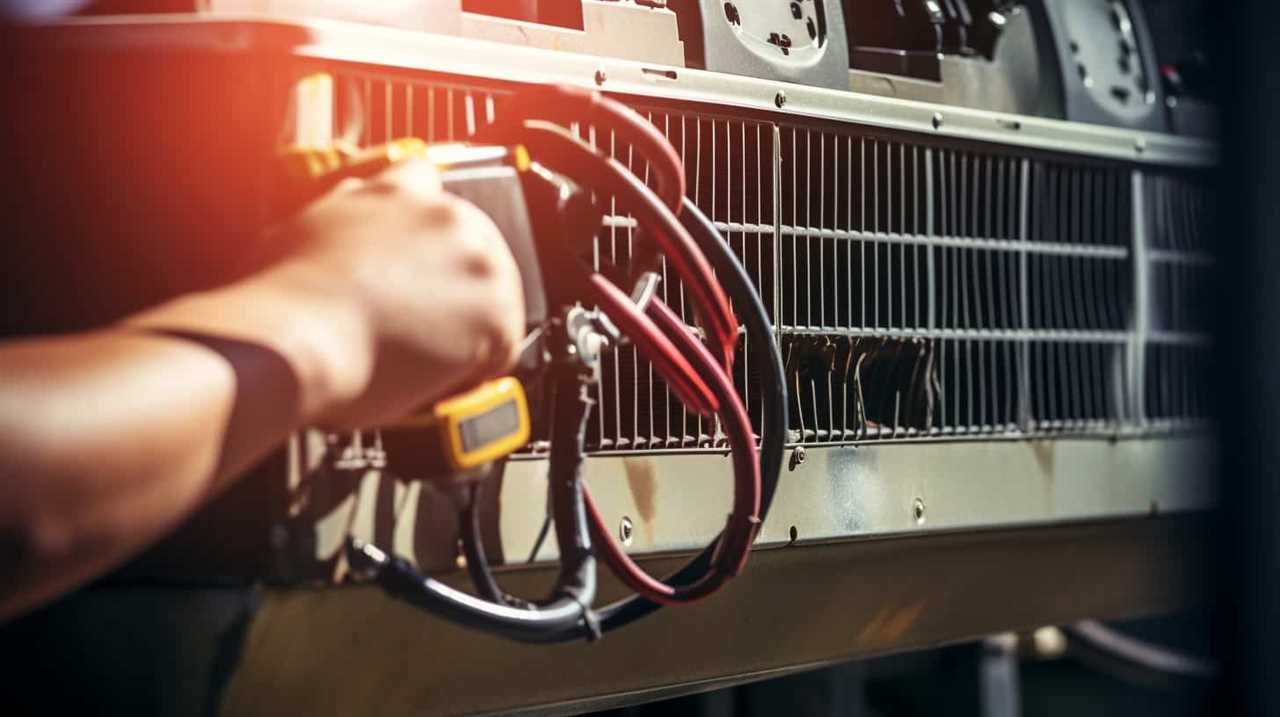
-
Energy Efficiency: High-efficiency heat pumps are designed to consume less energy compared to other heating options. This means lower utility bills and reduced energy consumption, leading to long-term cost savings.
-
Reduced Maintenance Costs: High-efficiency heat pumps are built with advanced technology and durable components, resulting in fewer breakdowns and lower maintenance expenses over time.
-
Increased Resale Value: Installing a high-efficiency heat pump can increase the value of your property. Homebuyers are increasingly looking for energy-efficient features, and a high-efficiency heat pump can be a selling point that sets your home apart from others.
When comparing heat pump efficiency to other heating options, it becomes clear that investing in a high-efficiency heat pump is a smart financial decision that leads to long-term cost savings.
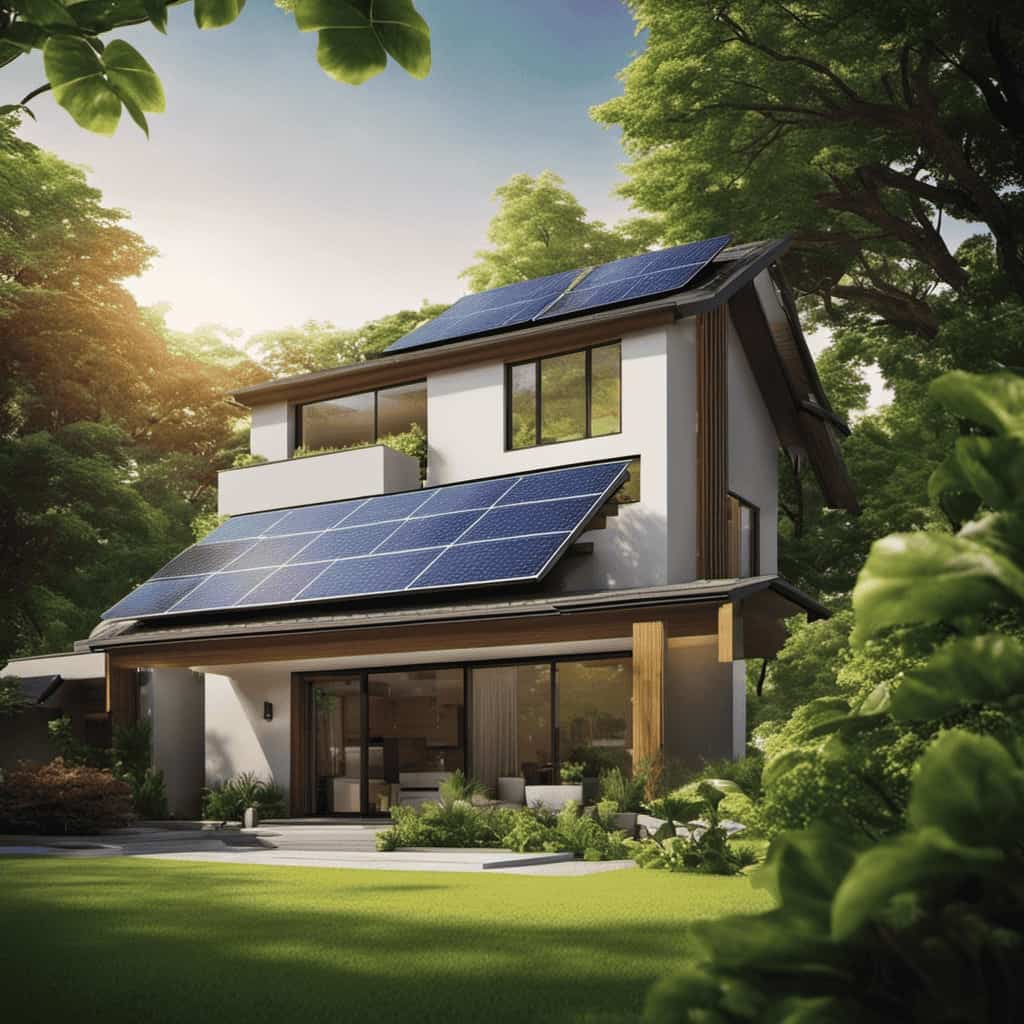
Frequently Asked Questions
Are There Any Tax Credits or Rebates Available for Installing a High-Efficiency Heat Pump?
Yes, there are tax credits and rebates available for installing a high-efficiency heat pump. These incentives can provide financial savings and make the investment more affordable for homeowners.
Can Regular Maintenance Help Improve the Efficiency of a Heat Pump?
Regular maintenance can definitely improve the efficiency of a heat pump. It helps prevent problems, ensures optimal performance, and extends the lifespan of the unit. Plus, it saves you money in the long run.
What Are Some Common Misconceptions About Heat Pump Efficiency?
Common misconceptions about heat pump efficiency include thinking that a bigger unit is always better, not considering the climate, and neglecting regular maintenance. Factors affecting efficiency include insulation, ductwork, and thermostat settings.
Are There Any Innovative Technologies That Can Be Added to a Heat Pump to Improve Its Efficiency?
Yes, there are innovative heat pump technologies that can improve efficiency. Energy saving advancements like variable-speed compressors, smart thermostats, and geothermal heat pumps are examples of how efficiency can be enhanced.
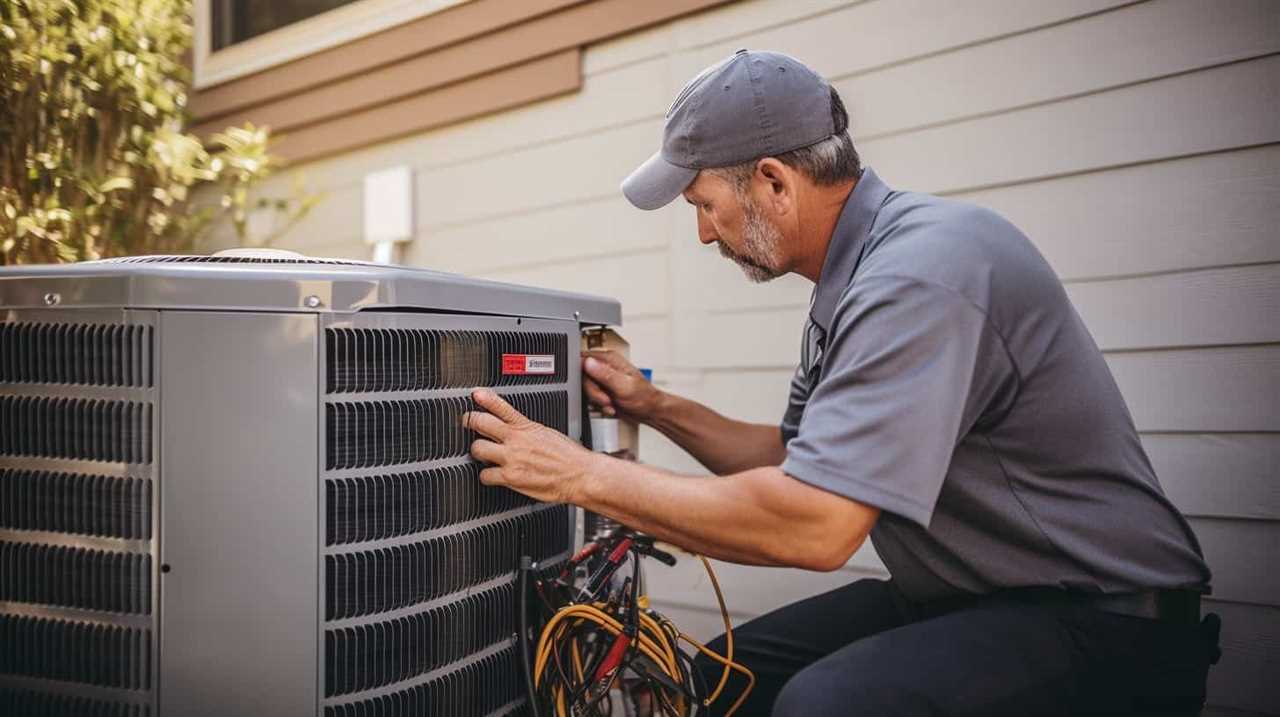
How Do Factors Like Climate and Location Affect the Efficiency of a Heat Pump?
Climate and location play a crucial role in heat pump efficiency. Factors like temperature, humidity, and geographic variations affect how well a heat pump performs. It’s important to consider these factors when choosing a heat pump for optimal energy savings.
Conclusion
In conclusion, understanding and maximizing residential heat pump efficiency is crucial for both cost savings and environmental sustainability.
By considering factors such as SEER and HSPF ratings, proper sizing, innovative technologies, regular maintenance, and government incentives, homeowners can make informed decisions that optimize their energy usage.
Investing in high-efficiency heat pumps not only reduces energy consumption but also leads to long-term cost savings.
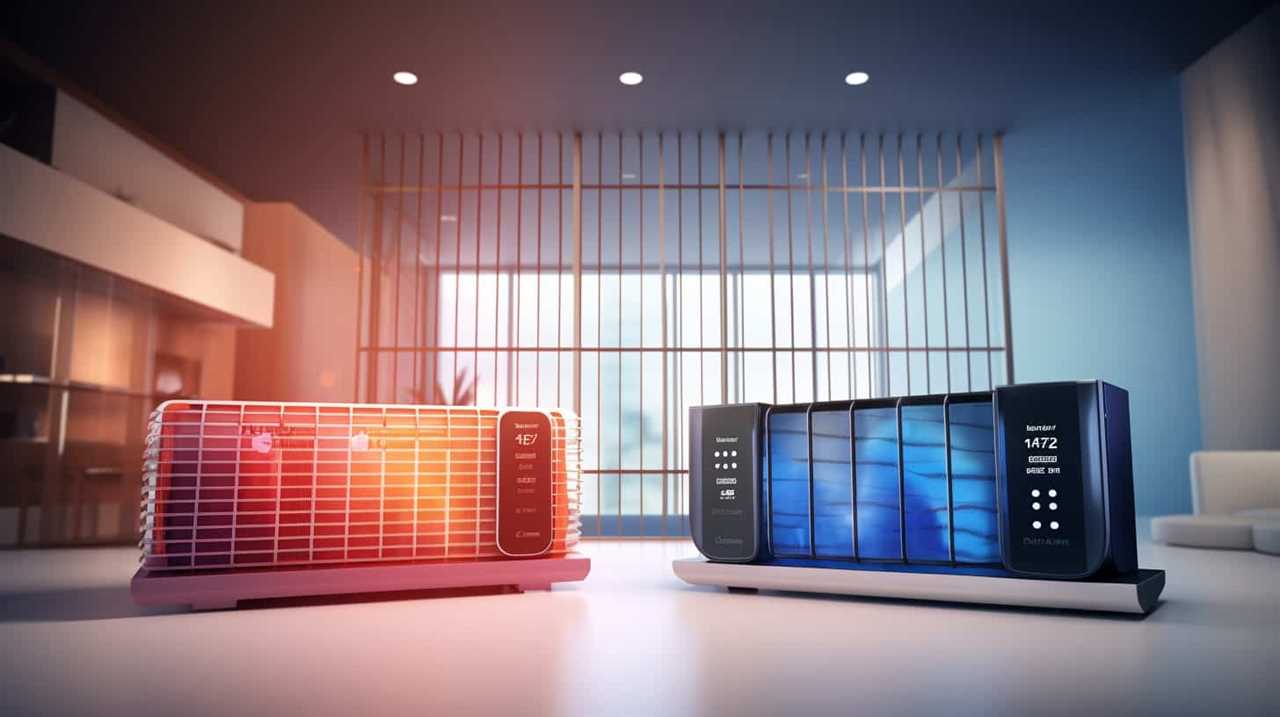
So, take the time to test your knowledge and explore ways to improve your heat pump efficiency today.



